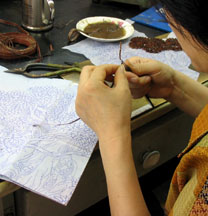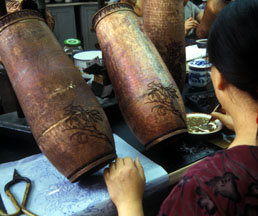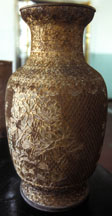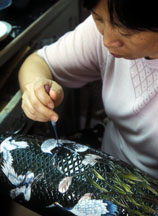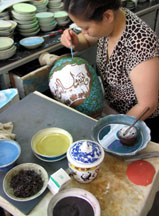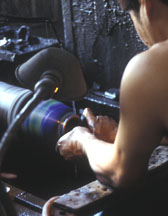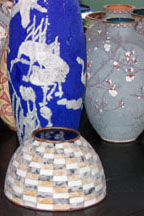| The process may be observed at the Beijing Enamel Factory in China. | ||
 |
 |
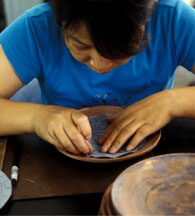 |
| Vessels are constructed with several pieces of copper that are formed and soldered together. | A copper plate is measured with calipers, then marked for pattern placement. The pattern is pinned to carbon paper, then carefully traced to transfer the design to the surface of the metal. | |
